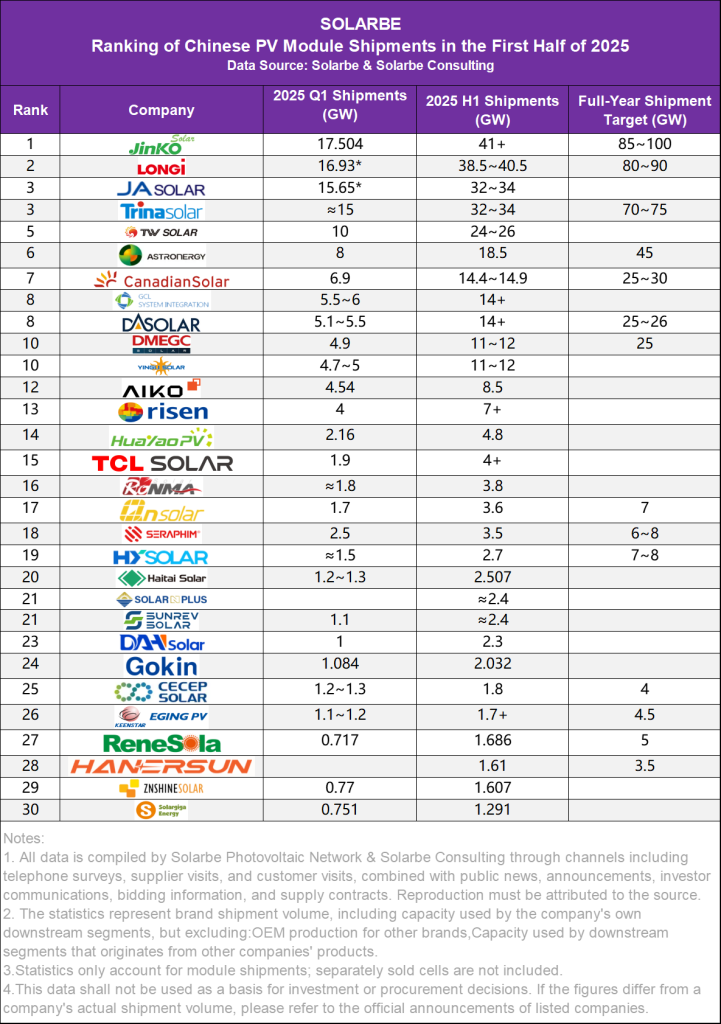After thorough research and field visits by Solarbe and Solarbe Consulting, we hereby announce the 2025 first half-year PV module shipment rankings for your reference:

Jinko Solar firmly holds the top spot in module shipments, achieving over 41GW in module sales (excluding cells), demonstrating stable performance. LONGi, leveraging the advantages of its BC modules in the distributed market and its strong bidding capabilities, has seen an increase in market share, maintaining its second-place position. JA Solar and Trina Solar are closely matched, and this time we have ranked them jointly in third place. The final verdict on which company performs better will have to wait until the August mid-year financial reports are released.
The combined market share of the top four companies in the first half of the year exceeds 46.5%, a result that aligns with general expectations. When Tongwei and Astronergy are included, the top six companies account for over 60% of the market share, with production capacity sufficient to meet global demand. In contrast, the combined shipments of companies ranked 16th to 30th make up only 11.2% of the total. It’s no wonder some executives from smaller enterprises have lamented: “To achieve supply-demand balance in the industry chain, it’s not enough to just squeeze out third- and fourth-tier companies. Larger players must also exit the market for the industry to regain its former glory.”
Based on our research data and distribution analysis, the second-quarter shipments of companies with a higher proportion of domestic sales showed a noticeable sequential increase, driven by a rush-installation wave. However, a decline is likely in the third quarter, introducing more uncertainty into the next quarter’s rankings. As is well known, building brand reputation is not an overnight task. European and American customers are not overly sensitive to minor price differences (even to the second decimal place), placing greater emphasis on a company’s product and technological strengths to earn their trust.
Notably, several companies (including some top-ranked ones) have already lowered their module shipment targets, shifting focus toward profitability rather than sheer shipment volume, setting an example for the industry. Here, we also call on relevant companies in the industry to pay more attention to their long-term development, particularly in areas such as profitability, cash flow, technological potential, and employee well-being, avoiding the loss of valuable substance in pursuit of short-term shipment figures. The core competitiveness of China’s PV industry has never been just a string of cold, hard numbers.


